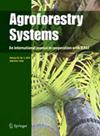Agroforestry systems in Italian urban planning
Abstract
Urban and Peri-urban Agroforestry (UPAF) is an emerging urban practice in Italy that can contribute to promoting the resilience of cities to climate change effects while complementing the set of ecosystem services provided by urban agriculture and urban forestry. This study examined the occurrence of UPAF in urban planning and the factors that determined this presence. Urban plans of Italian cities, the national framework laws and the regional legislation were analysed through a keywords search. Questionnaire-based interviews to decision makers and officials were conducted in the cities that contained elements of UPAF in their planning documents. Overall, four out of 140 Italian cities have intentionally included agroforestry in voluntary planning tools such as green plans, while additional twelve cities contained incidental UPAF elements in compulsory documents such as technical implementation standards. These findings indicate that agroforestry is beginning to be present in municipal green management although it is far for being massively incorporated in Italian cities. Questionnaires to decision makers and officials highlighted that grass-root organizations and knowledge hubs such as universities and other research institutions are crucial to promote UPAF into urban planning, suggesting that a collaboration among different actors is needed to create an enabling environment for agroforestry. A more in-depth knowledge of these topics across European countries could provide the opportunity to find possible common elements thereby contributing to define innovative strategies in order to spread agroforestry in urban and peri-urban contexts.

 求助内容:
求助内容: 应助结果提醒方式:
应助结果提醒方式:


